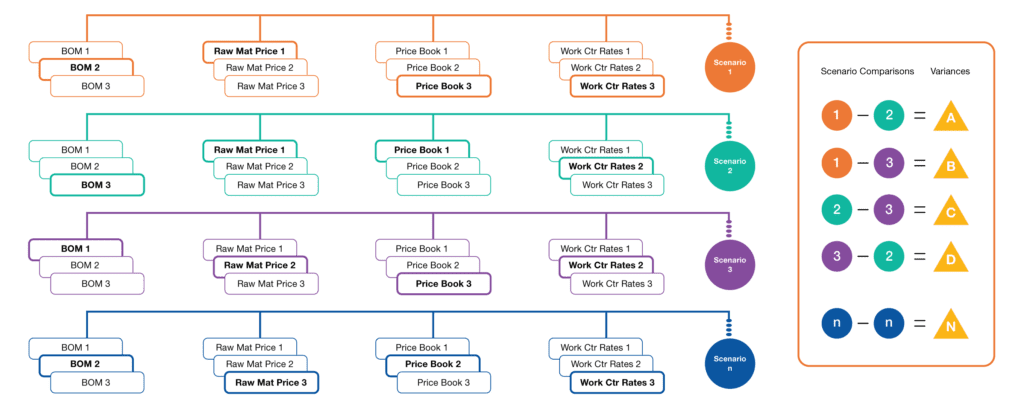Planning + Simulations
Your company’s critical business planning and simulation activities are likely based on spreadsheets that are tough to manage, prone to errors, and difficult to share and secure. With more focus on leveraging financial planning and analysis (FP&A) functions to drive tactical and strategic decisions through simulations, you need tools to predict cost and profit answers confidently and accurately without the challenges of traditional spreadsheet-based processes.
ImpactECS supercharges your simulation capabilities with tools to centralize business rules and connect relevant data – creating a framework to analyze the impact of changes that occur across your company’s value chain. You can create and select any type of data set – actual, calculated, estimated – to generate unique scenarios and compare those scenarios to get meaningful answers to the questions and challenges your company may encounter.

ImpactECS gives you the ability run simulations across the value chain to understand the ways costs affect your profit performance.
Cost of Sales Terms
Sales pricing, volume, and mix
Trade terms, rebates, discounts, and other investments
Cost to Source and Procure
Vendor quote analysis
Supplier performance benchmarking
Cost to Make
Product cost calculations for changing volume and mix
Raw material and commodity price sensitivity
Material and labor requirements planning
Multi-plant production scenarios and benchmarks
Capital investment and operation efficiencies
Cost center budgets, rates, and allocations
Inventory valuations
Foreign exchange rate changes
Least-cost BOM formulations
Cost to Move
Network flow and distribution path cost benchmarks
Shipping and transportation method analytics
Supply chain analytics
Cost to Sell and Support
Product and customer quoting and estimating
Sales process and activity benchmarks
New product development
Corporate overhead spending
Transfer pricing
SKU availability
Creating a Cost-Focused Culture
Manufacturers all have one thing in common – the need for an effective product costing process that delivers accurate and actionable results. Best-in-class finance teams are catapulting costing and cost transparency to the front of the list of strategic initiatives to transform their leaders’ ability to make decisions. If you’re struggling with the lack of ERP costing capabilities or overwhelmed with spreadsheets, you’ll find value in hearing how leading manufacturing companies have established robust product costing processes.
Check out this discussion around the three focus areas for product costing – Highlighting the benefits of a strong costing culture, the role of costing as a competitive advantage when identifying opportunities and enabling strategies, and starting on the path to better costing by defining the rules, tools, and data involved.
Resources
Improve SAP Costing with ImpactECS
Learn More >Cost Allocations: Gaining Actionable Insights
Read the Article >Get Quick Insights and Best Practices
Watch the CostTalk Minute Series >Daily News for Finance Leaders
Read The Ledger >Guide to Implementing Cost Systems
Watch the 30-min Q+A >Ready to see ImpactECS in action?
Get a glimpse of how we help companiesunderstand their costs and profits